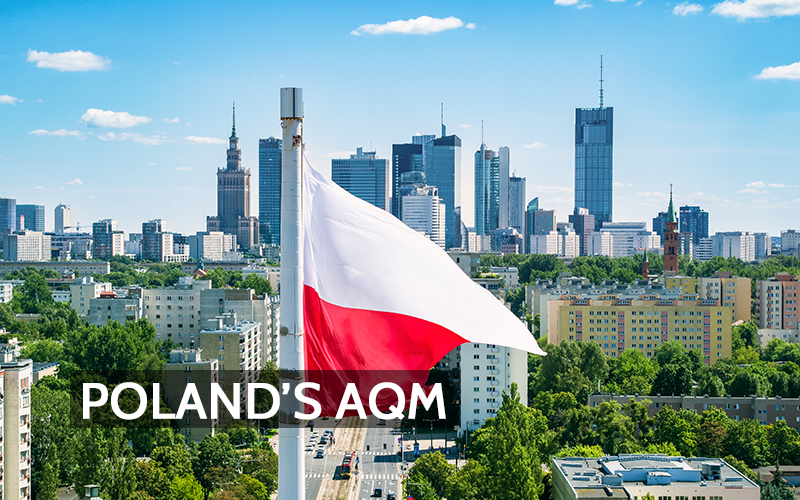Poland has long grappled with significant air pollution challenges, primarily due to its heavy reliance on coal for energy and residential heating. In response, the Polish government has implemented a series of regulations aimed at improving air quality and aligning with European Union (EU) standards. This article explores the evolution of these regulations, their implementation, and the future trajectory of air quality management in Poland.
Historical Context and Initial Regulations
Poland’s air quality issues became particularly pronounced in the late 20th and early 21st centuries, with high levels of particulate matter (PM) and other pollutants adversely affecting public health. In response, Poland began aligning its environmental policies with EU directives, notably transposing the EU Ambient Air Quality Directive (2008/50/EC) into national law in 2012. This directive set limits on pollutants such as sulfur dioxide, nitrogen oxides, and particulate matter, establishing a legal framework for monitoring and improving air quality.
Key Legislative Measures
- Environmental Protection Law (EPL): Serving as the cornerstone of Poland’s environmental legislation, the EPL outlines general requirements regarding emissions into the environment. It mandates that emissions must be managed to prevent pollution, thereby safeguarding environmental quality.
- Air Protection Programs (APPs): Developed at regional levels, APPs are tailored strategies aimed at reducing emissions in areas where pollutant levels exceed permissible limits. These programs involve local authorities and are crucial for implementing targeted measures to combat air pollution.
- National Air Pollution Control Programme (NAPCP): Aligned with EU requirements, the NAPCP outlines Poland’s national strategy for reducing air pollutant emissions. It sets specific targets and measures for various sectors, including transportation, industry, and residential heating, to achieve compliance with EU air quality standards.
Implementation and Challenges
Despite the establishment of these regulations, Poland has faced challenges in achieving significant improvements in air quality. The continued use of coal, particularly in residential heating, has been a major obstacle. Additionally, the decentralized nature of air quality management, involving multiple levels of government, has sometimes led to inconsistencies in enforcement and effectiveness.
Recent Developments and Future Outlook
In recent years, Poland has demonstrated a renewed commitment to addressing air pollution. The government launched the “Clean Air” program, a €25 billion initiative aimed at renovating buildings to improve insulation and replace outdated heating systems with more efficient, less polluting alternatives. This decade-long scheme, initiated in 2018, targets the renovation of 4 million homes and buildings, marking it as the largest of its kind in Europe.
Furthermore, Poland has set ambitious targets for integrating renewable energy into its power mix. The national energy and climate plan presented in 2024 aims for a 56% share of renewable power in electricity generation by 2030, reflecting a significant shift from coal dependency. This transition is expected to involve substantial investments, with the plan envisaging around 792 billion zlotys ($205 billion) to achieve these goals.
The World Bank has also highlighted the economic benefits of decarbonizing Poland’s economy. Achieving net-zero emissions by 2050 could boost the country’s GDP by an additional 4%, with improved air quality contributing to better public health outcomes and economic productivity.
Poland’s journey toward improved air quality has been marked by significant regulatory efforts and substantial challenges. The alignment with EU directives and the implementation of national programs shows the government’s commitment to addressing air pollution. However, the transition from coal dependency to renewable energy sources requires sustained investment, public engagement, and effective enforcement of regulations. The future of air quality regulation in Poland appears promising, with strategic plans in place to achieve cleaner air and a healthier environment for its citizens.
Related Article:
Houseplants and Indoor Air Quality: The Reality Behind the Green
References:
- https://www.right-to-clean-air.eu/en/lawsuits-and-decisions/poland/
- https://www.dudkowiak.com/environmental-law-in-poland/air-pollution-regulation-in-poland/
- https://repozytorium.kul.pl/bitstream/20.500.12153/1621/1/Radecka_Ewa_The_national_air_pollution_control_programme_in%20Poland.pdf
- https://documents1.worldbank.org/curated/en/426051575639438457/pdf/Air-Quality-in-Poland-What-are-the-Issues-and-What-can-be-Done.pdf
- https://www.sustainability-times.com/clean-cities/battling-the-scourge-of-air-pollution-in-poland/
- https://www.reuters.com/sustainability/climate-energy/poland-sees-56-renewables-2030-power-mix-climate-plan-2024-09-05/
- https://www.reuters.com/markets/carbon/decarbonising-by-2050-could-boost-polands-economy-by-4-world-bank-says-2024-11-05/


